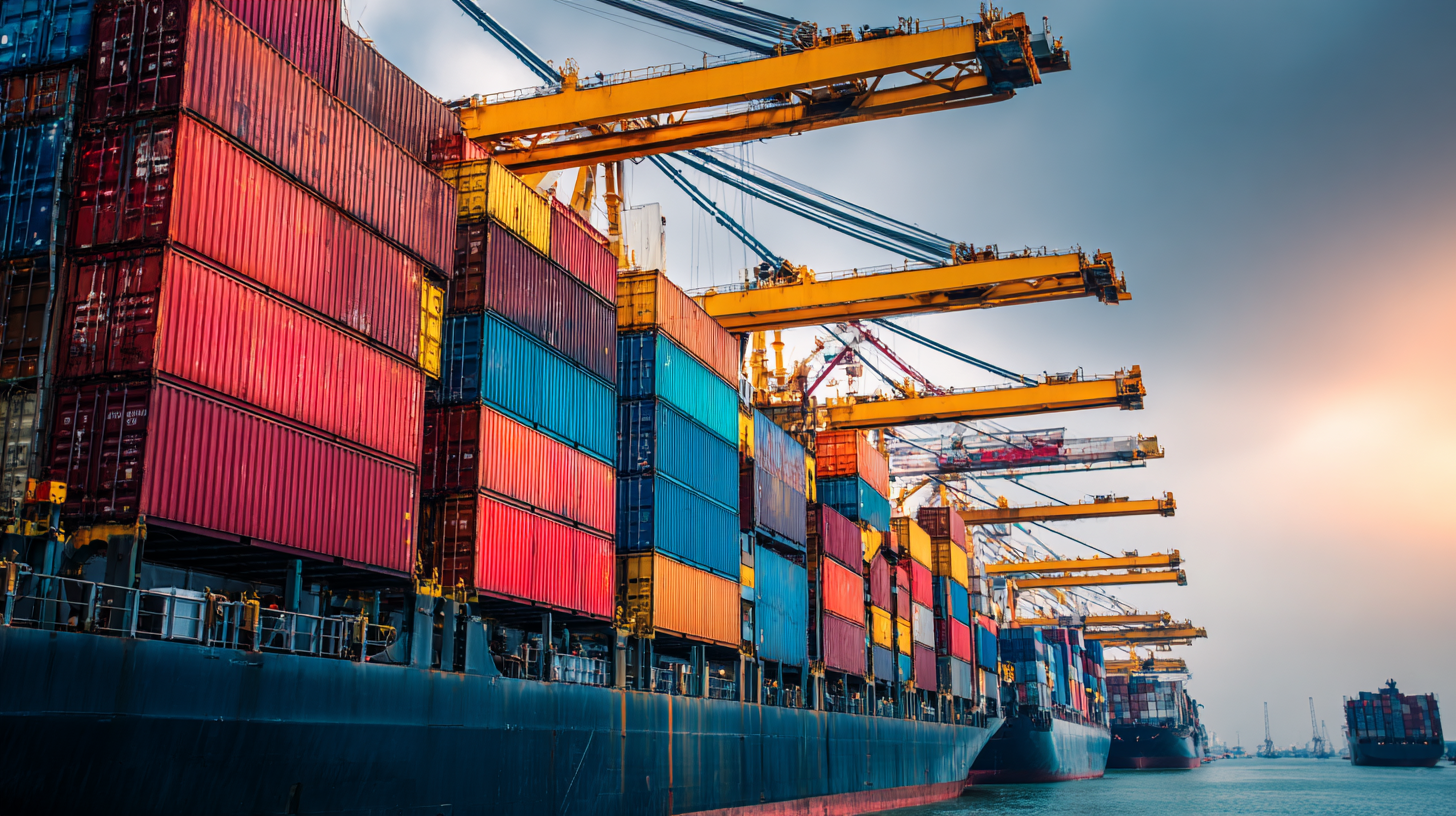The global demand for cargo shipping containers has surged dramatically, with the container shipping market projected to reach $9.9 billion by 2027, according to a report by Allied Market Research. As businesses strive to maximize value in their supply chains, optimizing the use of cargo shipping containers becomes paramount. Strategies centered on post-sale support and cost efficiency not only improve operational performance but also enhance customer satisfaction. By focusing on these areas, companies can ensure their cargo shipping containers contribute significantly to their bottom line while adapting to market dynamics. This blog will explore effective methods that can be employed to leverage cargo shipping containers for maximum value, ensuring you remain competitive in this fast-evolving industry.

In the ever-evolving landscape of cargo shipping, post-sale support has emerged as a critical component that directly influences customer satisfaction and operational efficiency. A recent industry report highlights that effective post-sale services can enhance customer retention rates by as much as 75%. This statistic underscores the importance of maintaining strong relationships with clients after the sale is made. In a market where shipping delays and supply chain disruptions have become commonplace, companies that prioritize post-sale support can better navigate challenges and sustain customer loyalty.
Tip: Implement a robust customer feedback system to continuously improve post-sale services. This feedback will enable you to adapt and respond swiftly to your clients’ needs, ensuring they feel valued and supported.
Furthermore, cost efficiency strategies are essential in maximizing value for cargo shipping businesses. A focused approach to managing expenses can lead to substantial savings; for instance, optimizing shipping routes can reduce operational costs by up to 30%. Incorporating technology to streamline processes can also play a pivotal role in achieving cost-effectiveness.
Tip: Regularly assess your shipping routes and consider lean management principles to eliminate waste and streamline operations. Utilizing data analytics can provide insights into improving both post-sale support and overall cost management, allowing for a more responsive and efficient service.
When evaluating cost efficiency strategies for cargo shipping containers, businesses must focus on various factors that significantly impact overall expenses. According to the Container Ownership and Leasing Market Report by Mordor Intelligence, the global container leasing market is expected to grow at a CAGR of 6.3% between 2021 and 2026. This substantial growth indicates heightened competition among leasing companies, prompting them to offer more attractive rates and flexible leasing terms. Companies can leverage these developments by negotiating contracts that align with their operational needs, thus ensuring reduced costs and improved cash flow.
Additionally, the importance of utilizing eco-friendly shipping containers cannot be overstated. The International Maritime Organization (IMO) reports that adopting energy-efficient practices can reduce fuel consumption by approximately 20-30%. By investing in modern, efficient containers and shipping techniques, businesses can not only cut down on fuel costs but also minimize their environmental impact. Implementing technologies such as container tracking and management systems further enhances operational efficiency, allowing companies to optimize their shipping routes and reduce delays, ultimately leading to significant cost savings over time.
As logistics and supply chain demands evolve, companies are increasingly exploring alternatives to traditional cargo shipping containers. One innovative solution gaining traction is the use of modular shipping units. These versatile containers can be easily customized and repurposed for various types of cargo, providing greater flexibility and efficiency in storage and transport. Unlike standard containers that often have fixed dimensions, modular units can be designed to accommodate specific shipping needs, reducing wasted space and ensuring better load management.
Another promising alternative is the adoption of biodegradable shipping containers made from sustainable materials. These eco-friendly options not only lower carbon footprints but also align with global trends toward environmental responsibility. By utilizing materials that break down naturally, businesses can enhance their brand reputation while ensuring compliance with increasingly stringent regulations regarding packaging waste. The integration of technology, such as smart sensors in containers, also paves the way for real-time monitoring of shipments, significantly improving tracking and reducing losses during transit.
By prioritizing these alternatives, companies can maximize cost efficiency while also enhancing the sustainability of their shipping practices, ultimately contributing to a more robust and responsible logistics strategy.
| Container Type | Cost Efficiency (USD) | Durability (Years) | Post Sale Support | Alternative Benefits |
|---|---|---|---|---|
| Standard Shipping Container | 2,500 | 10 | Limited Repair Services | Widely Available |
| Refrigerated Container | 4,000 | 12 | Comprehensive Support | Temperature Control |
| Split Container | 3,200 | 8 | Flexible Options | Modular Design |
| Open Top Container | 3,500 | 9 | Specialized Handling | Easy Loading of Tall Cargo |
| Flat Rack Container | 2,800 | 7 | Basic Support | Ideal for Heavy Loads |
In today's competitive logistics market, maximizing the value of shipping containers after purchase is essential for businesses aiming to enhance operational efficiency. Innovative solutions such as retrofit containers for alternative uses have gained traction, allowing companies to capitalize on their investments. According to a report from the Container Trade Statistics (CTS), over 95% of shipping containers are reused or repurposed rather than discarded, indicating a growing trend toward value-adding modifications. By implementing post-sale support services, companies can ensure that containers are maintained and adapted, thereby extending their lifespan and utility in various applications, be it storage, construction, or even temporary housing.

Moreover, cost efficiency strategies play a pivotal role in maximizing the financial return from cargo shipping containers. A study by the International Maritime Organization (IMO) reveals that companies which invest in systematized maintenance and troubleshooting see a reduction in operational costs by up to 20%. Utilizing data analytics can further streamline logistics processes, efficiently monitoring container conditions and preemptively addressing potential issues. These strategies not only enhance container value but also contribute to a more sustainable approach in logistics, promoting a circular economy in the shipping industry. Embracing these innovative solutions can significantly impact profitability while adhering to environmental standards.
In the ever-evolving landscape of shipping operations, maintaining cost effectiveness is paramount. As companies face increasing pressures to streamline their logistics, implementing best practices in cargo shipping becomes critical. By focusing on efficient operational management, businesses can enhance productivity while minimizing costs. Techniques such as optimizing routes, leveraging technology, and fostering collaborations with resilient ports can mitigate disruptions and drive savings.
Moreover, the decarbonization of logistics presents both challenges and opportunities. Companies are urged to take proactive measures towards reducing logistics emissions. This not only aligns with global sustainability goals but can also create a competitive advantage in a market that increasingly values environmental responsibility. Additionally, integrating machine learning and data analytics into supply chain management can help organizations predict and respond to changes rapidly, ensuring ongoing cost efficiency while navigating the complexities of shipping operations.

Rob was always very honest and upfront about everything and took the time to explain everything I needed.
“highly recommended. They provided us with a great storage container with ontime services.”
“Bought a used container, its perfect, no leaks and in good condition.”
“Good service and prompt delivery. A great option for temporary storage at a decent price.”
Join our mailing list to get the latest storage container inventory and offers